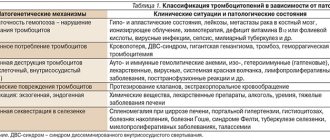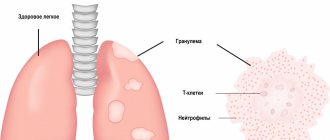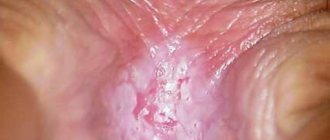Infectious disease specialist
Sinitsyn
Olga Valentinovna
33 years of experience
Highest qualification category of infectious disease doctor
Make an appointment
The vast majority of Russians know that consuming low-quality canned or smoked products can lead to a serious illness - botulism. This is an acute disease of infectious-toxic origin, caused by the pathogen Clostridium botulinum and the toxic product of its vital activity, which is a powerful poison of biological origin. It is botulinum toxin that makes the disease extremely severe and often fatal.
What is botulism
The bacteria Clostridium botulinum is ubiquitous in the soil, however, due to the high demands of microorganisms on conditions for reproduction, the disease rarely occurs in humans. For example, in Moscow, about 15-20 cases of botulism are registered annually, and in Russia as a whole - no more than 200 cases per year.
For rapid sustainable growth of the population of clostridia, which is the causative agent of botulism, the absence of oxygen and a favorable temperature within 30-35 degrees Celsius are necessary. Most often, such an environment is created during home canning in a hermetically sealed jar, salting and smoking. The bacterium multiplies rapidly in the canned product, releasing a toxin abundantly. The higher the number of bacteria in a product, the more botulinum toxin it contains and, accordingly, the higher the risk of poisoning. Bacteria can also multiply in the human intestine; in this case, the disease develops more slowly.
The botulism bacillus Clostridium botulinum exists in two forms - vegetative - capable of reproduction, and spore - extremely resistant to adverse external factors. The vegetative form of the bacterium can withstand contact with sodium chloride solution, acidic environment and spices, but cannot tolerate the presence of oxygen. It can remain viable for several years, but will not withstand 15 minutes of boiling. The spore form of botulism is even more stable: it persists for several decades, can withstand up to 6 hours in boiling water, and can withstand freezing, drying, and exposure to 18% saline solution. The death of clostridia spores occurs after half an hour of autoclaving at a temperature of at least 120 degrees.
Botulism toxin has a fairly high stability: in nature it remains active for up to 118 hours, a high concentration of table salt (18%) does not have an inactivating effect on it. At the same time, the toxin is completely destroyed within 10 minutes when heated to 100 ° C and is inactivated by alkaline solutions (pH higher) and alcoholic beverages.
At the same time, the toxin is completely destroyed within 10 minutes when heated to 100 ° C and is inactivated by alkaline solutions (pH higher) and alcoholic beverages.
Are you experiencing symptoms of botulism?
Only a doctor can accurately diagnose the disease. Don't delay your consultation - call
Types of disease
Depending on the etiology, botulism can be:
- foodborne - this is the most common type of disease resulting from eating foods contaminated with Clostridium botulinum;
- wound – developing due to contact of the patient’s wound surface with a surface on which bacteria are present;
- children's - developing only in infants in the first six months of life due to parents' violation of hygienic recommendations for child care;
- respiratory - in this case, the pathogen enters the body through the respiratory system in the form of spores sprayed in large quantities into the air (for example, when using bacteriological weapons).
All of the listed varieties, except food ones, are extremely rare. Transmission of botulism from an infected person to a healthy person is impossible.
Mortality
Although BoNT is a powerful poison, the preconception that every or almost every case of botulism will be fatal is incorrect. Statistically, the mortality rate from botulism is very low, as are cases of infection in general. About fifty years ago, for every 100 people with botulism, there were about 50 deaths. However, thanks to the advent of toxoid and proper patient care, today the mortality rate from botulism has decreased to 5 (or less) cases per 100 cases [1].
How to avoid infection
According to the recommendations of Rospotrebnadzor, to prevent botulism you should:
- use only industrially prepared canned food;
- Do not under any circumstances eat canned food with a bulging lid;
- wash vegetables, fruits and mushrooms well from soil particles;
- Do not use vegetable products with signs of spoilage for home canning;
- quickly remove the entrails from caught or purchased fish, wash it well, and then store it in the cold;
- do not preserve, but pickle mushrooms and vegetables;
- Before using as food, boil canned foods for about half an hour to destroy botulinum toxin.
You should know that products contaminated with Clostridium botulinum are indistinguishable from quality food in taste, color and smell. The best way to avoid poisoning is to heat treat any canned food for 15-20 minutes. This will help avoid not only botulism, but also other intestinal infections that cause poisoning and inflammation of the gastrointestinal tract.
Complications
Typical complications of botulism:
- aspiration pneumonia - an infection that occurs when food or stomach contents enter the lungs due to the paralytic effects of botulinum toxins;
- atelectasis is airlessness of the lung or part of it caused by collapse of the alveoli. Manifested by shortness of breath, chest pain, cyanotic skin tone;
- purulent parotitis - inflammation of the parotid salivary gland due to the penetration of microbes from the mouth into the gland;
- acute respiratory failure - a condition in which, even with maximum effort, a person cannot inhale the required amount of air and remove carbon dioxide from the lungs;
- secondary infections associated with invasive therapy;
- serum sickness - a disease that develops after receiving heterologous anti-botulinum serum;
- botulinum myositis is an inflammation of the muscles, most often the calf muscles.
What happens in the human body
The incubation period for botulism is variable and can last from 2 hours to 5 days, but, as a rule, symptoms of poisoning appear within the first 2-6 hours after the bacteria and its products enter the body. Botulinum toxin begins to penetrate the blood already in the oral cavity. The main part of it is absorbed in the small intestine and then distributed throughout the body. The toxin very quickly affects nerve fibers, blocking the transmission of nerve impulses coming from the brain and spinal cord to muscle tissue. Because of this, the function of muscle fibers decreases or stops completely.
Paralysis affects the ocular and swallowing muscles, then the intercostal and diaphragm muscles. The peristaltic activity of the intestine decreases, the protective activity of leukocytes decreases, metabolic processes in red blood cells change, as a result of which the oxygen supply to tissues sharply deteriorates. A person experiences difficulty breathing, which will soon lead to death if immediate medical attention is not provided.
Therapeutic Uses of BoNT
Despite all the dangerous effects on the human body, BoNT is widely used in medicine and cosmetology. Doctors use BoNT's ability to cause flaccid paralysis.
In cosmetology, BoNT is known as Botox. Botox is a purified form of botulinum toxin A that is often used to treat wrinkles. BoNT blocks the signals that the brain sends to the facial muscles, and wrinkles simply stop appearing. In addition, Botox injections can be useful in combating excessive underarm sweating.
In medicine, BoNT helps eliminate neurological disorders - dystonia, spasticity, strabismus and others, as well as treat migraines and overactive bladder [8].
Christina V. and Toma P. worked on writing the text. Ekaterina B. created these wonderful illustrations, for which special thanks to her! The topic of the article was conceived by Christina V. Editing the text, drawings and creating posters was also done by Christina V. and Toma P.
How to recognize botulism
The main symptoms of botulism include:
- dry mouth, nausea, change in voice, hoarseness, pain when swallowing;
- double vision, blurred vision (fog, spots before the eyes);
- drooping of the upper eyelid, dilated pupils, strabismus, ptosis;
- lack of facial expressions, pale skin, unsteady gait, poor coordination;
- symmetrical paresis and paralysis of the limbs, respiratory muscles (feeling of chest compression);
- bloating and abdominal pain, diarrhea 3-5 times a day.
If a person experiences at least one or two of the listed signs of botulism, it is necessary to immediately consult a doctor. Delay is fraught with the most serious consequences, since rapidly developing paralysis of the muscles of the respiratory system inevitably leads to the death of the patient.
Diagnosis of botulism in a medical facility includes laboratory tests aimed at detecting botulinum toxin and bacteria in the patient's vomit and blood. In addition, products that are believed to have caused poisoning are necessarily examined for the presence of a toxin.
Symptoms
Botulism is not contagious, and sick people are not dangerous to others. For the disease to develop, the bacterial toxin must enter the gastrointestinal tract.
The incubation period for botulism averages 16-36 hours (sometimes up to a week) - that is, it is approximately this time after ingestion of contaminated food that symptoms appear. The disease always begins acutely, there are two possible development options:
- first, symptoms of an intestinal infection appear, and then signs of damage to the nervous system;
- Symptoms of damage to the nervous system immediately appear.
Signs of intestinal infection:
- malaise;
- increase in body temperature up to 38 degrees;
- vomit;
- loose stools;
- stomach ache.
This condition lasts up to a day and is caused by other intestinal bacteria found in infected foods. It is worth noting that about 30% of patients with botulism do not have gastrointestinal symptoms 1 .
Neurological symptoms of botulism:
- dizziness and headache;
- severe muscle weakness;
- blurred vision - blurred vision, spots before the eyes, inability to read, double vision;
- strabismus;
- dilated pupils, their different sizes;
- in severe cases, ophthalmoplegia develops - the eye is motionless, the pupil does not react to light.
Soon after the neurological symptoms of botulism, signs of damage to the muscles of the oropharynx appear:
- slurred speech;
- nasal voice;
- swallowing disorder;
- choking.
In severe cases, the respiratory muscles are affected - the person cannot take a full breath.
Signs of respiratory failure:
- shortness of breath, feeling of lack of air;
- blue lips;
- rapid breathing.
All patients experience dry skin, dry mouth, and thirst. In severe cases, paralysis of the intestines and urinary tract occurs.
Recovery occurs slowly, gradually. Initially, salivation is restored. Neurological symptoms gradually normalize. The last thing to return is visual acuity and muscle strength.
Neonatal botulism occurs when a child becomes infected from the environment. There are known cases of infection through honey used to prepare infant formula. The first symptoms are lethargy and refusal to eat. Then typical neurological symptoms develop.
Important! Impaired swallowing of liquids of any severity indicates a severe course of the disease and is an indication for immediate hospitalization of the patient in the intensive care unit 2.
Severity
Botulism is classified by severity:
- mild - damage only to the oculomotor muscles;
- moderate severity - damage to the oculomotor and glossopharyngeal muscles;
- severe - damage to the respiratory muscles occurs.
The disease always occurs in an acute form; chronic botulism does not occur.
According to the method of penetration of bacteria into the body, they are distinguished:
- food botulism - bacteria enter with food;
- wound - infection of open wounds to which there is no access to oxygen;
- Neonatal botulism is an infection of infants.
In 99% of cases, food botulism is observed.
What can be confused with
Botulism must first be distinguished from neurological diseases. Symptoms not typical for botulism 3:
- meningeal signs - tension in the muscles of the back of the head and neck when bending the limbs, inability to reach the chest with the chin when tilting the head;
- impaired sensitivity in the limbs;
- convulsions;
- disturbance of consciousness;
- mental disorders.
At an early stage, botulism must be distinguished from other intestinal infections. Not typical for him :
- frequent vomiting and diarrhea;
- severe intoxication with high fever;
- severe abdominal pain.
Muscle weakness due to botulism must be distinguished from diphtheria polyneuritis. With botulism, there is no redness of the throat or high fever.
Differences from a stroke - there is no severe dizziness, paralysis is always bilateral, there is no loss of sensitivity in the limbs.
1. Small medical encyclopedia. — M.: Medical encyclopedia. 1991–96 2. First aid. - M.: Great Russian Encyclopedia. 1994 3. Encyclopedic Dictionary of Medical Terms. - M.: Soviet Encyclopedia. — 1982—1984
Useful
See what “Botulism” is in other dictionaries:
Botulism - Photograph of microslide Clostridiu ... Wikipedia
botulism is a human disease associated with poisoning of the body by the toxin of anaerobic bacteria Clostridium botulinum, which develops on food products (most often in low-quality canned meat and fish). (Source: “Microbiology: Dictionary of Terms”, ... ... Dictionary of Microbiology
BOTULISM - (from Latin botulus sausage) foodborne toxic infection resulting from poisoning with products contaminated with botulism bacilli and their toxins. The pathogen is a strict anaerobe; usually multiplies and releases a toxin in foods such as canned food, salted fish ... Big Encyclopedic Dictionary
BOTULISM - BOTULISM is a rare but sometimes fatal form of food poisoning caused by a toxin produced by the bacterium Clostridium botulinum. The toxin affects the nervous system, causing paralysis and cessation of breathing. The most... ... Scientific and technical encyclopedic dictionary
botulism - noun, number of synonyms: 1 • poisoning (39) ASIS Dictionary of Synonyms. V.N. Trishin. 2013 ... Dictionary of synonyms
botulism - a, m. botulisme <gr. botulus sausage. A severe infectious disease accompanied by general poisoning of the body and caused by food products (sausage, fish, etc.) contaminated with botulinus bacteria. Krysin 1998 ... Historical Dictionary of Gallicisms of the Russian Language
BOTULISM - (from the Latin botulus sausage), or a l l a n t i a z i s, is caused by poisoning of the so-called. canned, sausage or fish poison and manifests itself in the form of neuroparalytic suffering, expressed in impaired secretion of the salivary glands, paresis and paralysis... ... Big Medical Encyclopedia
botulism - Severe food poisoning from products containing a toxin secreted by bacteria of the species clostridium botulinum [https://www.dunwoodypress.com/148/PDF/Biotech Eng Rus.pdf] Biotechnology topics EN botulism ... Technical Translator's Guide
Botulism - (from the Latin botulus sausage), an acute infectious disease caused by toxins of botulism bacteria when eating foods (usually home-canned food, salted and smoked fish, sausages) containing these toxins. The nervous system is affected... ... Illustrated Encyclopedic Dictionary
BOTULISM - honey. Botulism is an acute bacterial zoonotic infection. Clinically manifest forms are caused by the effect of pathogen exotoxins on cells of the nervous system. Characterized by paresis and paralysis of striated and smooth muscles,... ... Reference book on diseases
How are patients with botulism treated?
At home, first aid for botulism consists of transporting the patient to a medical facility as soon as possible. The faster this is done, the higher the chances of a successful recovery. At the same time, the patient’s stomach should be rinsed with an aqueous solution of baking soda (20 g per liter of water), given a cleansing soda enema and given enterosorbent.
The above actions will slow down the action of the toxin and help partially remove it from the body. However, they do not cancel calling an ambulance and transporting the patient to a medical facility, since with severe intoxication, the patient can very quickly develop paralysis of the respiratory tract and asphyxia, which leads to death.
Competition “Bio/Mol/Text”-2020/2021
This work was published in the nomination “Visually about the beloved” of the competition “Bio/Mol/Text”-2020/2021.
The general partner of the competition is the annual biotechnology conference BiotechClub, organized by the international innovative biotechnology company BIOCAD.
The sponsor of the competition is SkyGen: a leading distributor of life science products on the Russian market.
Competition sponsor: the largest supplier of equipment, reagents and consumables for biological research and production.
"Book" sponsor of the competition - "Alpina Non-Fiction"
The poster is also available in pdf format.
Treatment of botulism at JSC "Medicine" (clinic of academician Roitberg)
Treatment of the disease includes the following:
- gastric lavage using a special probe to remove remnants of contaminated food;
- intestinal dialysis using a special solution;
- administration of antitoxic serum in accordance with the type of bacteria detected (A, C or E);
- administration of drugs for infusion therapy to accelerate detoxification, restore water and electrolyte balance, and eliminate protein disturbances;
- introduction of antibacterial drugs;
- measures to eliminate hypoxia and its consequences;
- treatment of complications of botulism.
Depending on the severity of the poisoning and overall health, treatment for botulism takes from several days to a month. However, with timely medical intervention and compliance with clinical recommendations, botulism is sooner or later completely cured, and the activity of the nervous system is restored without the slightest consequences for its functioning.
WHO activities
Botulism outbreaks are rare, but they are public health emergencies that require rapid recognition to identify the source of infection, determine the type of outbreak (whether natural, accidental, or potentially intentional), prevent further cases of disease, and effectively treat affected patients. The success of treatment largely depends on early diagnosis and prompt administration of botulinum antitoxin.
WHO's role in responding to outbreaks of botulism that may be of international concern is to:
- Surveillance and detection: WHO supports strengthening national surveillance and international alert systems to ensure rapid local detection of disease outbreaks and effective international response. WHO's main tool for surveillance, coordination and response is the International Food Safety Authorities Network (INFOSAN), which links national authorities in Member States responsible for managing food safety events. This network is jointly managed by FAO and WHO.
- Risk assessment: At the heart of WHO's response is a risk assessment methodology that involves determining the type of outbreak - whether it is natural, accidental or possibly intentional. WHO also provides scientific assessments as the basis for international food safety standards, guidelines and recommendations developed by the Codex Alimentarius Commission.
- Source isolation: WHO coordinates with national and local authorities to contain further spread of disease outbreaks.
- Providing assistance: WHO is coordinating international agencies, experts, national laboratories, airlines and commercial organizations to mobilize equipment, supplies and supplies needed for the response, including the supply and administration of botulinum antitoxin.
Questions and answers
What foods cause botulism most often?
Medical statistics show that the first place among the causes of botulism is occupied by home-canned food - pickled mushrooms and cucumbers, as well as home-smoked hams and dry-cured sausages. Less often, poisoning is caused by homemade pickles, smoked or dried fish, canned meat and fish. In rare cases, the source of infection becomes bee honey, potato salad with fried onions in a large amount of oil without subsequent heat treatment, and pickled bamboo shoots.
How can you become infected with botulism?
The source of botulism infection can be found in any products that have been in contact with contaminated soil or the intestinal contents of animals, birds, or fish that contain bacterial spores. Eating poorly washed food or home-canned foods prepared with insufficient sterilization conditions are the main sources of infection.
How to recognize botulism in a child?
Signs of botulism in children are indistinguishable from the symptoms of adults: abdominal pain, diarrhea, change in voice or crying pattern, in infants - inability to hold the head, etc. Since the disease develops very quickly, at the slightest trouble you should immediately consult a doctor. Timely assistance and compliance with clinical recommendations for botulism in children can avoid the worst consequences of poisoning.
Story
The first mention of cases of botulism refers to a decree banning the consumption of blood sausage due to its danger to life, signed by the ruler of Byzantium, Leo VI (866–912). Nine centuries later, the “Killer Sausage” has again attracted public attention. In 1789, after a case of poisoning in Württemberg, 13 people, 6 of whom died, scientists began to look for the cause of sausage poisoning. It was never found, and for a long time it was believed that during storage, “cadaveric acid” was formed in the sausage, leading to intoxication of the body.
It was only in 1895 that the Belgian bacteriologist Emil van Ermengem isolated the causative agent of the disease, a rod-shaped bacterium, from infected ham and the spleen of one of the victims. In Russia, S.V. studied botulism. Konstantinov. He named the pathogen that he managed to isolate from fish Bacillus ichtyismus, and the disease itself - “ichthyism” [2].










